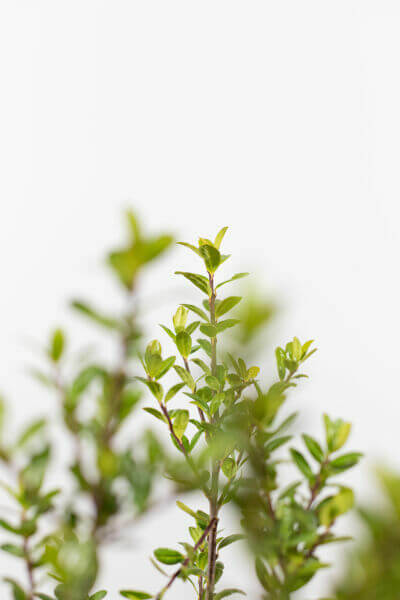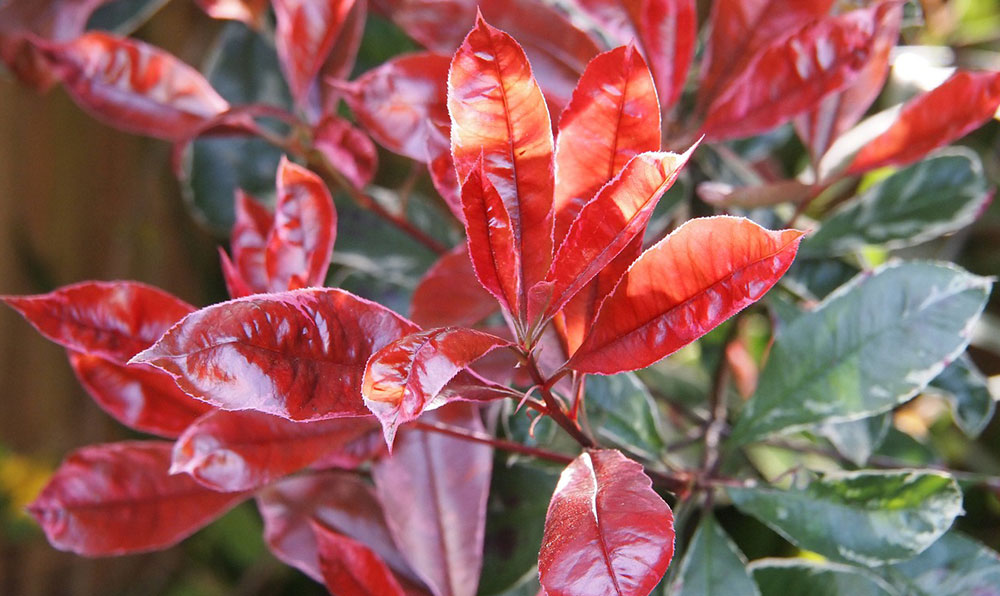Hedge Plants For Garden Edges
Enhance your garden's allure with lush hedge ranges such as Yew (Taxus), Thuja, Laurel, Photinia, and Bamboo, celebrated for their structural stability and environmental advantages.
Yew and Thuja offer evergreen coverage and winter season durability, while Laurel uses fast development and broad, fragrant leaves.
Photinia includes seasonal charm with its dynamic red foliage, and Bamboo lends a low-maintenance, tranquil ambiance.
These hedges enhance air quality, reduce sound, and develop tranquil, private areas.
Correct planting, spacing, and upkeep make sure vigorous growth and ecological harmony.
Check out how these lavish varieties can elevate your garden's beauty and well-being.
Secret Takeaways
Change Your Garden With Lush Hedge Varieties
- Select Yew for its dense, evergreen growth and unequaled longevity.
- Choose Laurel for its fast growth and broad leaves, guaranteeing fast personal privacy.
- Pick Photinia for its vibrant seasonal foliage, which turns a striking dark red.
- Utilize Bamboo for a low-maintenance, winter-hardy hedge with aesthetic appeal.
- Space plants 2-3 per meter and prune routinely for ideal development and health.
Popular Hedge Plants
When changing a garden with lavish hedge ranges, it's important to consider popular hedge plants such as Yew, Thuja, Laurel, and Photinia due to their distinct characteristics and benefits.
Yew (Taxus) is highly esteemed for its durability and dense, green growth, making it a prime choice for sustaining landscapes.
Thuja is noted for its evergreen foliage and robust winter resilience.
Photinia adds seasonal vibrancy with red leaves that darken over time, creating vibrant visual appeal.
Laurel provides quick development and fragrant, broad leaves, perfect for fast personal privacy.
Furthermore, Bamboo is an exceptional option for ambiance, using a low-maintenance, winter-hardy alternative that improves the garden's aesthetic with its elegant, swaying walking canes.
These choices accommodate a variety of horticultural needs and choices.
Advantages of Garden Hedges
Garden hedges offer a wide range of advantages, making them an important addition to any landscape. These natural barriers are affordable to carry out and offer significant wind protection, boosting air flow and adding to noise decrease. The dense foliage of hedges like Thuja and Beech ensures personal privacy by obstructing exposure, creating a tranquil and remote environment.
Hedges also play a crucial function in microclimate policy, supplying a stable environment that cultivates plant development and reduces temperature level changes. Their complex leaf structures filter toxins, improving air quality and adding to a healthier garden community.
Additionally, hedges master sound decrease, absorbing and deflecting acoustic waves to lower ambient sound levels. This dual functionality of offering both acoustic and visual privacy improves the total tranquility and aesthetic appeal of any garden.
Planting and Upkeep Tips
For an effective hedge, meticulous preparation of the planting area is essential. Guarantee the soil has appropriate pH and drain to support strong root advancement.
Area the plants properly for the chosen species. Water the hedge frequently during its initial growth phase, adjusting as required with seasonal changes.
Implement a methodical insect control and disease prevention technique, using organic or chemical treatments when required. Routinely inspect for aphids, mites, and fungal infections.
Apply mulch to retain moisture and reduce weeds. Seasonal pruning promotes thick development and air flow, vital for plant health.
Following these guidelines will help you cultivate a vibrant, well-maintained hedge that enhances the beauty of your garden.
Spacing and Cutting Standards
Spacing and Trimming Guidelines
Correct spacing and cutting are essential for cultivating healthy, aesthetically appealing hedges. Appropriate spacing guarantees each plant receives sufficient nutrients, light, and air flow.
Follow these standards for ideal hedge upkeep:
- Spacing: Position hedge plants 2-3 plants per meter to motivate robust growth.
- Pruning Techniques: Regular pruning is necessary for preserving desired hedge height and shape. Trim brand-new growth in summer season and cut down older wood throughout winter.
- Seasonal Care: Change trimming approaches and schedules according to seasonal requirements to ensure plant health.
- Hedge Height: Frequently screen and trim to maintain the wanted hedge height and achieve consistent aesthetic appeals.
Complying with these steps will guarantee your hedge flourishes, boosting both the appeal and functionality of your garden.
Choosing the Right Hedge
Selecting the Right Hedge
Picking the appropriate hedge includes evaluating elements such as fully grown height, foliage density, and environmental durability. Effective hedge plant choice requires understanding each types' development characteristics and site-specific versatility.
For instance, Yew (Taxus) uses excellent longevity and dense development, while Thuja is notable for its winter durability. In addition, considering maintenance requirements is essential; fast-growing species like Laurel or Privet need routine cutting, whereas low-maintenance alternatives like Bamboo or Ivy might be more effective for those seeking very little upkeep.
Environmental elements such as soil type, light accessibility, and wetness conditions must also guide the selection process. This careful approach guarantees the chosen hedges will flourish, offering both aesthetic and functional benefits to the garden landscape.
Delivery and Planting Guidance
To ensure your hedge plants thrive, they should be provided by specialized carriers and planted immediately upon arrival.
Follow these necessary actions for effective planting:
- Soil Preparation: Enhance the soil with organic matter to improve drain and nutrient material.
- Planting Depth: Create a trench twice the width and equivalent to the depth of the root ball.
- Watering Strategies: Water thoroughly after planting, keeping the soil consistently wet but not filled.
- Mulching: Apply a layer of mulch to keep wetness and suppress weeds.
Consumer Support and Service
Provided the vital role of timely assistance in horticultural pursuits, our client support group is readily available 6 days a week through telephone, e-mail, and social media to provide skilled advice and swiftly deal with any concerns. Their commitment to quick reaction times guarantees client fulfillment by solving queries associated with plant health, optimum planting approaches, and upkeep schedules.

-------------------
Within 24 hours
This thorough support group, reinforced by an outstanding 9.3/ 10 client ranking, highlights our dedication to enhancing the gardening experience for every client.
Frequently Asked Questions
For How Long Does It Take for Hedge Plants to Establish?
Hedge plants normally need one to 3 years to end up being totally developed, with the specific period differing by types and growing conditions.
Efficient care throughout this vital duration is important for robust growth. Consistent watering, vigilant weed control, hedge plants and suitable fertilizer application are pivotal in promoting strong root development.
For example, fast-growing types like Laurel may establish quicker, while slower-growing varieties such as Yew might take longer. Thorough upkeep speeds up the establishment procedure, leading to healthy and dense hedges.
What Are the Best Hedge Plants for Personal Privacy?
The concern of the best hedge plants for privacy involves examining evergreen and deciduous alternatives.
Evergreen hedges like Thuja, Laurel, and Cypress supply year-round coverage, guaranteeing constant personal privacy.
On the other hand, deciduous hedges such as Beech provide seasonal privacy, shedding leaves in colder months.
Secret maintenance tips for personal privacy hedges include regular cutting, fertilizing in spring, and appropriate spacing-- typically 2 to 3 plants per meter.
In addition, consistent watering and diligent weed elimination are essential for promoting healthy, thick development.
Can Hedge Plants Attract Wildlife to My Garden?
Yes, hedge plants can bring in wildlife to your garden by providing necessary advantages like shelter, food, and nesting sites, consequently enhancing regional biodiversity. For instance, yew, holly, and laurel are excellent for drawing in birds, while ivy supports a variety of bugs.
Nevertheless, it's essential to keep in mind that there are some drawbacks, such as increased upkeep to manage insects and routine upkeep. Thoroughly selecting and preserving hedge ranges can help balance these disadvantages and advantages, ultimately promoting a lively and sustainable community in your garden.
Exist Any Blooming Hedge Plants Available?
Yes, there are flowering hedge plants readily available that can enhance the charm of your garden.
For instance, Elaeagnus, also understood as Olive Willow, produces aromatic white flowers in the fall, adding a touch of beauty.
Photinia, another popular option, showcases vibrant red leaves that develop into an abundant green, developing a dynamic visual impact throughout the seasons.
To guarantee these plants grow, it's vital to practice correct pruning techniques and seasonal upkeep, such as cutting brand-new growth in the summertime and cutting down in the winter season.
These measures will help preserve the health and visual appeal of your blooming hedges.
How Do I Avoid Pests in My Hedge Plants?
To prevent insects in hedge plants, use natural pest control methods and preserve appropriate hedge care. Present helpful insects like ladybugs, which prey on harmful pests, to produce a balanced community.
Routinely examine your hedges for signs of invasion and immediately get rid of any afflicted parts to avoid the spread. Guarantee the health of your hedges by using balanced fertilizers and offering adequate water.
Utilize mulching to retain soil wetness and correct spacing to minimize plant stress and promote robust growth. These practices collectively assist in decreasing bug problems and preserving a healthy hedge.
Conclusion
In essence, choosing the right hedge ranges such as Yew, Thuja, and Laurel can transform any garden into a peaceful haven. These plants supply year-round greenery, enhance visual appeal, and deal practical benefits like noise reduction and wind protection.
Proper planting strategies, precise spacing, consistent watering, and seasonal cutting are crucial for optimal development.
Trustworthy delivery services and skilled client support make sure a seamless experience from purchase to planting, making it easier than ever to raise your outdoor area.
Garden hedges offer a plethora of advantages, making them a valuable addition to any landscape. These natural barriers are economical to implement and supply significant wind defense, enhancing air blood circulation and contributing to noise decrease. The dense foliage of hedges like Thuja and Beech makes sure privacy by blocking visibility, developing a serene and remote environment.

Pruning Methods: Regular pruning is essential for keeping preferred hedge height and shape. Trim brand-new development in summer and cut back older wood throughout winter season.